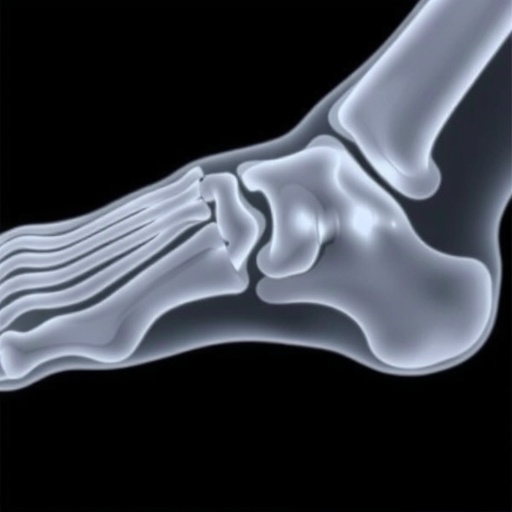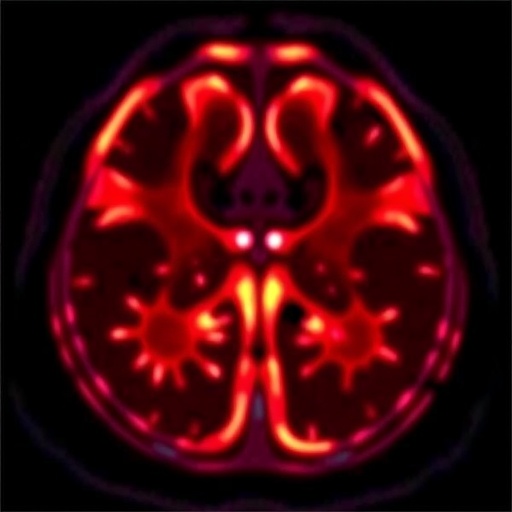In the realm of pediatric medicine, the accurate assessment of musculoskeletal conditions is paramount. One such condition that has garnered significant attention is metatarsus adductus, a common foot deformity seen in children. Recent research conducted by Pérez-Boal, Martin-Villa, and Becerro-de-Bengoa-Vallejo presents an in-depth analysis of the metatarsus adductus angle, focusing on the reliability and repeatability of measurements in both intra-observer and inter-observer contexts. This landmark study adds to the existing body of knowledge, highlighting critical factors that can potentially influence clinical assessments and treatment outcomes.
The metatarsus adductus angle is a crucial parameter in diagnosing the condition correctly. Accurate measurement of this angle can guide clinicians in determining treatment strategies, monitoring disease progression, and evaluating the effectiveness of interventions. By focusing on how consistently different observers can measure this angle, the researchers aim to establish a more standardized approach to the diagnosis and management of metatarsus adductus.
To magnify the significance of this research, it is essential to recognize that variability in angle measurements can stem from observer bias, equipment discrepancies, or patient positioning. These factors can lead to inconsistent diagnoses and inequality in treatment options. The study addresses these inconsistencies head-on, meticulously setting out to measure the intra-observer reliability, which reflects one observer’s ability to produce the same results upon repeated measurements, and inter-observer reliability, which evaluates the agreement between multiple observers.
.adsslot_kMnaK1iLoT{ width:728px !important; height:90px !important; }
@media (max-width:1199px) { .adsslot_kMnaK1iLoT{ width:468px !important; height:60px !important; } }
@media (max-width:767px) { .adsslot_kMnaK1iLoT{ width:320px !important; height:50px !important; } }
ADVERTISEMENT
Through a rigorous methodology, the researchers employed statistical analysis to examine the degree of concordance in angle measurement among various observers. Employing advanced statistical techniques ensures that the findings remain robust, and demonstrates the commitment of the authors to delivering precise and applicable results for clinical practice. Their work sets a precedent for how future studies can approach the measurement of orthopedic angles in children.
The study’s findings reveal a high degree of intra-observer reliability, indicating that individual clinicians are able to obtain similar measurements over repeated assessments consistently. This stability is vital, suggesting that once a practitioner is adequately trained in measurement techniques, they can reliably diagnose and monitor the condition over time. Conversely, the inter-observer reliability may reveal some variability, shedding light on the need for standardized training across healthcare professionals involved in pediatric orthopedic assessments.
Moreover, the implications of this research extend beyond the confines of the operating room. The ability to generalize these findings to a broader population can contribute to enhanced training programs for pediatric healthcare providers. Establishing standardized protocols can not only improve the reliability of measurements but also boost confidence among practitioners, knowing they can depend on a consistent framework for diagnosis.
As the study unfolds, it becomes evident that the establishment of clear guidelines regarding the measurement of the metatarsus adductus angle can influence clinical decisions on a larger scale. Pediatricians, orthopedic surgeons, and radiologists across various healthcare settings can benefit from adopting best practices drawn from this research. The overall effect enriches the entire field of pediatric care, placing a stronger emphasis on precise assessment techniques.
The broader medical community must take note of these findings to evolve treatment approaches effectively. The acceptance of standardized measurements enables researchers and clinicians to participate in collaborative studies, contributing comprehensive datasets that can inform future clinical trials and guidelines. This interconnectedness can lead to more effective treatment protocols and ultimately improve outcomes for children with metatarsus adductus.
As new technologies evolve in medicine, incorporating advanced imaging techniques may also play a role in enhancing measurement accuracy. Adapting to such innovations—which often includes improved imaging software and enhanced visual aids—can complement the traditional methods of assessment and lead to further improvements in reliability and repeatability.
Furthermore, it stands to reason that this research could pave the way for investigating other angles and deformities in pediatric orthopedics. By establishing strong methodological frameworks for measuring different conditions, future studies can replicate this success across various musculoskeletal issues. This evolutionary approach to clinical assessment fosters a more nuanced understanding of childhood orthopedic conditions as a whole.
In conclusion, the work by Pérez-Boal and colleagues serves not only as a pivotal study in the analysis of the metatarsus adductus angle but also as a springboard for future research and clinical practices. By shining a light on observer reliability and repeatability, they have laid the groundwork for significant advances in the understanding and treatment of metatarsal conditions in children. As this field of study continues to evolve, the emphasis on precise measurement techniques, standardized protocols, and continuous education will remain integral to achieving optimal clinical outcomes.
Ultimately, the findings underscore a critical need for the medical community to embrace rigorous standards in pediatric assessments. Through collaborative efforts, standardization, and continual learning, healthcare providers can ensure that every child receives the highest quality of care attainable in the diagnosis and management of foot deformities. This study is a testament to the power of evidence-based practice and its role in shaping the future of pediatric orthopedic care.
Subject of Research: Metatarsus adductus angle reliability and repeatability in children.
Article Title: Intra- and inter-observer reliability and repeatability of the metatarsus adductus angle in childhood: A concordance study.
Article References:
Pérez-Boal, E., Martin-Villa, C., Becerro-de-Bengoa-Vallejo, R. et al. Intra- and inter-observer reliability and repeatability of the metatarsus adductus angle in childhood: A concordance study.
Pediatr Radiol (2025). https://doi.org/10.1007/s00247-025-06375-3
Image Credits: AI Generated
DOI: https://doi.org/10.1007/s00247-025-06375-3
Keywords: Metatarsus adductus, pediatric orthopedics, reliability, repeatability, angle measurement.
Tags: clinical assessment standardizationeffectiveness of interventionsfoot deformity diagnosisinter-observer variabilityintra-observer variabilitymetatarsus adductus assessmentmusculoskeletal conditions in childrenobserver bias in measurementspediatric foot deformitiespediatric medicine researchreliability of angle measurementstreatment strategies for metatarsus adductus





